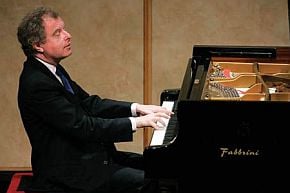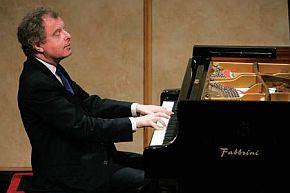
Since three of the last six Sonatas contain fugues at their climactic points, as well as a host of fuguelike sections, Schiff seems to be just the man for the job. To top it off, he will be playing all six within a week’s time. His March 29 recital will feature Sonatas 27–29, including the Hammerklavier, and on April 5 he will play the last three, 30–32, long regarded as the holy trinity of the set. Both will be presented by San Francisco Performances at Davies Symphony Hall.
How to order this huge body of work in performance? Artur Schnabel, who was the first to play (and record) the entire cycle, did it initially in the early 1930s, and three times thereafter. Schnabel chose to intermix Beethoven’s early works with later enigmatic ones, presenting a conundrum in juxtaposition. In contrast, by playing the Sonatas in chronological order, Schiff continues to highlight the way in which Beethoven steadily develops and expand the emotional range of the classical form, even as he makes decisive breaks, as in the three Sonatas Op. 31, which the composer said “turn over a new leaf.” If Schnabel’s approach was like a mountain climber scaling the loftiest peaks on different expeditions, Schiff has saved the highest summit for his next climb.
Beethoven composed no fewer than 23 of his Piano Sonatas during the first decade of his career, 1795 to 1805. Perhaps the greatest of these is the Sonata Appassionata, a tragic work that nonetheless shows the composer at his most powerful and defiant. After the great difficulties he had with his opera Fidelio, it must have seemed that his days of glory as Vienna’s greatest composer were over. Liszt, Chopin, and Schumann were coming up, and then there was Franz Schubert, who simply worshiped him. He needed a comeback, and it came in 1818. Called Sonata Op. 106 in B-flat Major, Fuer das Hammerklavier, and the product of years of labor, he said it would keep pianists busy for the next 50 years. It has taken more than that for performers and audiences to come to grips with Beethoven’s colossal ability to organize large-scale forms and realize the fathomless emotional worlds they contain.
Of the last three Sonatas, composed in 1822, around the time of the Ninth Symphony, Beethoven said they came out in a single breath. If this is true, then Schiff is right to play them all together, perhaps with some breath in between. They are among the supreme treasures that Beethoven gave to pianists and to the world of music — so expect a revelation.

